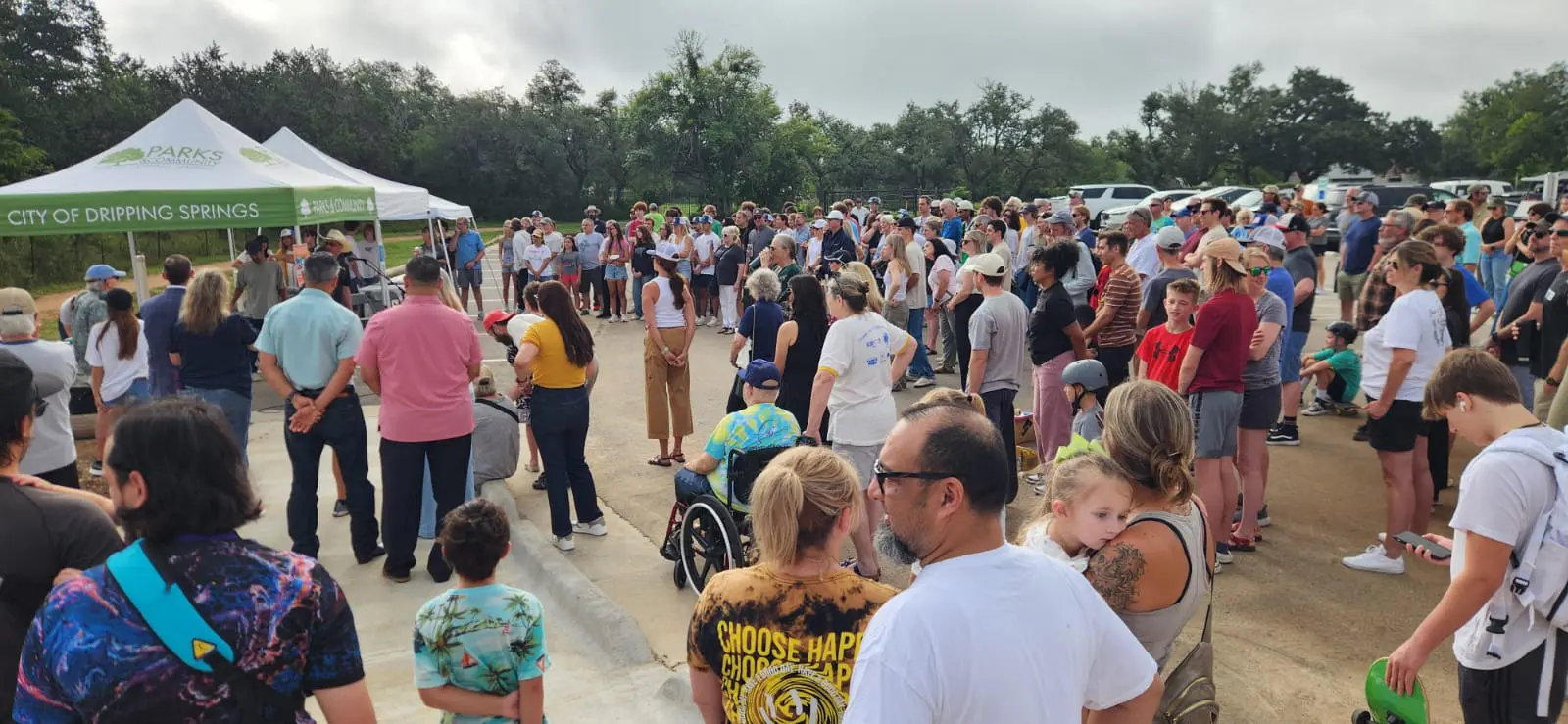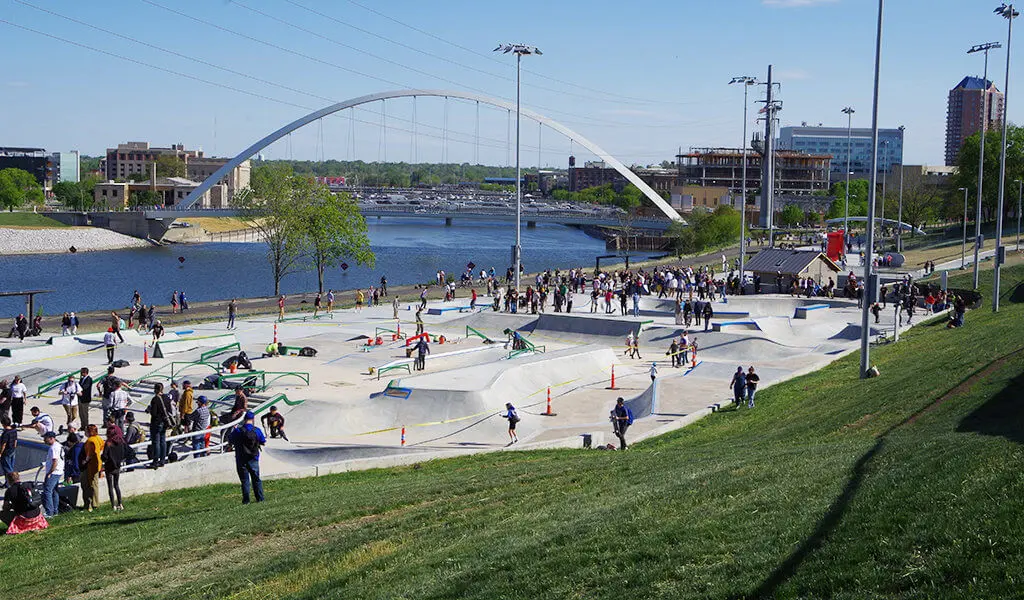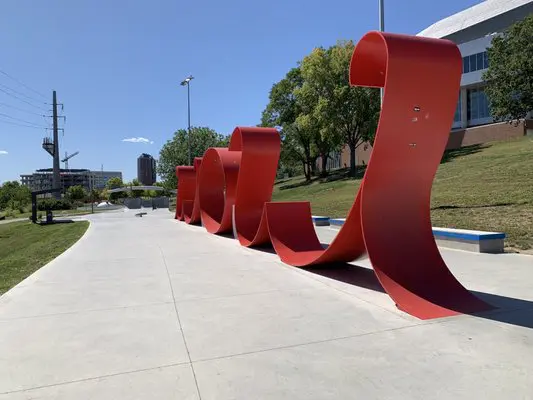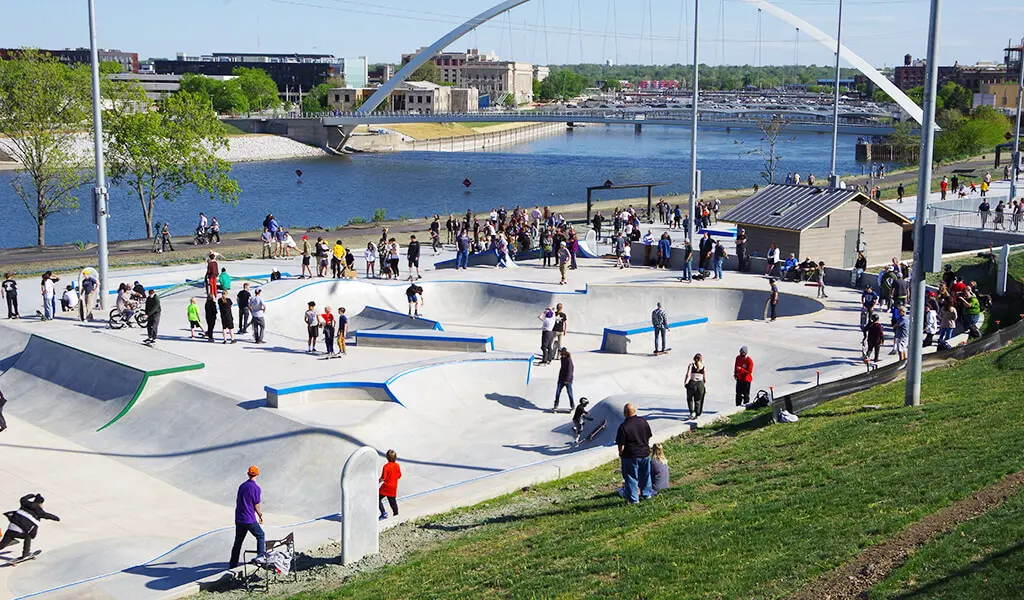Skatepark User Economic Benefits
Dr Thomas Kemp, Chair and Professor in the Department of Economics at the University of Wisconsin, recently published “Shred Central: Estimating the user benefits associated with large public skateparks”. The public skatepark development industry has lacked comprehensive, data-driven research such as this. Here at SPA Skateparks we are often asked by members of City Council, heads of Parks and Recreation Departments and members of Park Boards what types of economic impact figures are out there around skatepark usage and development. Kemp’s article doesn’t directly address the City’s benefit of skatepark ownership as a public facility. Instead, it identifies the skatepark user economic benefits, or the value of a skatepark visit to the user. Through this perspective a City can indeed better understand just how valuable a skatepark is.
Consider THIS article like a book report, referencing and summarizing points of interest from our lens as a skatepark design-build contractor. The quoted / italicized text in this article come directly from Mr. Kemp’s original publication. The rest are in our words. Thanks to Dr. Kemp for this much appreciated work. We’re big fans.
Kemp’s Abstract
“Using a count data travel cost model, we estimate the adult user benefits associated with the Lauridsen Skatepark in Des Moines, Iowa – the largest in the United States. We estimate adult user benefits to be $61 per user per day and roughly $488,000 annually.”1
Make sure you continue reading because this is a case study for a particular skatepark, not a catch-all number representing all skateparks. This study for skatepark user economic benefits can be performed for any other skatepark, but it’s not as easy as calculating a simply formula.
What does “Adult Skatepark User Economic Benefits” Mean?
“…there is also a clear basis for the hypothesis that skateboarders would have a willingness to pay for skateparks distant from where they live and work. It also follows that the more desirable a skatepark is, the greater the willingness to pay in terms of travel time and cost, which users would be willing to bear.”2
Understanding what the user benefit of $61 means is crucial. The $61 figure does NOT the economic impact seen by the City of Des Moines after having opened the Lauridsen Skatepark. Instead, it represents the amount an adult user is willing to pay to visit this skatepark, on a per day basis. In no way do these findings mean the City should charge for skatepark use. After all it’s a free-to-use public facility much like a basketball court or walking trail. In fact, the author further takes the position that the data speaks for itself – there’s considerable demand for more, good skatepark infrastructure.
The Travel Cost Model (TCM) for Calculating Skatepark User Economic Benefits
“The essence of this model is the notion that people’s willingness to travel – which takes time and money — to a given location will reveal their willingness to ‘pay’ to get to that location.”3
“The willingness of households to expend these resources to travel to a distant amenity indicates the value that the users place upon that amenity.”4
In essence, the value of something is what someone is willing to pay for it. In this context, the value of a day at the Lauridsen Skatepark to an adult skater (or biker, etc.) is $61. The $488,000 annual figure comes from a conservative estimate of 50 adults users per day. And for this skatepark in Iowa, the number of days below freezing and rain days have been excluded.
Skatepark User Sampling
The user benefit of $61 is specific to the Lauridsen Skatepark in Des Moines. As of this writing, it is the largest skatepark in the country at approximately 88,000 square feet. This same model can be applied to other skateparks, for sure, but it’s important to note that the Lauridsen Skatepark is a destination-scale facility. The user benefit would likely be much less if the skatepark at-hand is 6,000 square feet, or if the skatepark at-hand simply isn’t “good”.
The method includes polling or sampling, of skatepark visitors. For this exercise, 210 individuals were surveyed over the course of 6 days.The price a visitor is willing to pay to visit the skatepark varies. Gas, food, hotel/accommodation and other spending are included in the figure. Is the visitor coming from a Des Moines zip code or traveling across the country in order to visit? It’s important to remember that this study surveyed adults, not kids. And kids can be a big driver for an adult to travel to a skatepark.
Skateboarder Population and User Groups
“Roughly 8.8 million skateboarders in the US (2021) and as many as 80 million worldwide (Atencio 2018, statista.com). These estimates put skateboarding alongside or ahead of conventional American pastimes such as softball (8.1 million) and tackle football 5.2 million (statista.com). Thus, it is clear that skateboarding is well established in the United States in terms of individual participants and purchasing power, if not institutional support or infrastructure.”5
“Despite their name, skateparks are utilized by a significantly wider demographic. During a visit to a local public skatepark, one is likely to find a healthy mix of skateboarders, BMX bicycle riders, roller skaters (both inline and conventional), kick scooters, and a variety of onlookers from all walks of life (Atencio et al., 2018). Thus, the number of active skateboarders underestimates the number of skatepark users. It is for this reason that many community skateparks are instead referred to as ‘wheel parks.’”6
8m+ skateboarders in the United States is also what our company has cited over the past few years, but our source has been the National Sporting Goods Association (NSGA). Glad to hear these numbers align. Dr. Kemp recognizes other types of wheeled sports users frequent skateparks. And those participants are not represented in the 8 mil figure. It’s realistic to estimate, therefore, the total skatepark-user group could be double, at approx. 16 million. Simply put, for every skateboard at a skatepark, you’re bound to see at least one other wheeled-sport user.
How many square feet of skatepark terrain should a City have?
“The non-profit organization, The Skatepark Project, has published the only demand-based metric for skatepark location. The most recent version of their ‘best practices guide’ recommends 10,000 square feet of concrete park for every 25,000 residents. As a point of comparison, the guide also notes that two tennis courts are 14,000 square feet. Despite this modest recommendation, The Skatepark Project estimates that to meet this ratio, the US would need to nearly double the number of parks from current estimates.”7
“While helpful, the primary ratio of 10,000 sq feet of concrete skatepark per 25,000 inhabitants developed by the Skatepark Project ignores the heterogeneity of preferences that almost certainly exists across different communities. If we accept that this ratio reflects average demand from a given population, communities with more than average wheel park users will find that available infrastructure is insufficient, and the reverse will also be true. Equally important, this ratio does not incorporate the variations in the user-assessed quality of a skatepark – that is, differences in how ‘good’ the skatepark is.”8
This section struck me as particularly interesting. The more skatepark terrain a given community has the more users there will inevitably be. And if a community has a larger user-group, that group will draw others and result in the need / desire for even more skatepark terrain. This assumes that the skatepark is “good”. If the skatepark is “bad” (or non-existent) then the opposite of the above happens.
1,2,3,4,5,6,7,8 – Kemp, Thomas 2025. “Shred Central: Estimating the user benefits associated with large public skateparks” Journal of Economic Analysis 4, no.1:90. doi:10.58567/jea04010004
Disclaimer: This article is based on Dr. Thomas Kemp’s publication, and while we have made every effort to interpret and present the information accurately, errors or omissions may (and probably) still exist. This should not be considered a definitive source, and readers are encouraged to consult the original work and other reputable references for verification.
Is your City interested in a public skatepark? Contact SPA Skateparks. We’d love to support your efforts and guide you through the design-build skatepark process.
Other source links:






